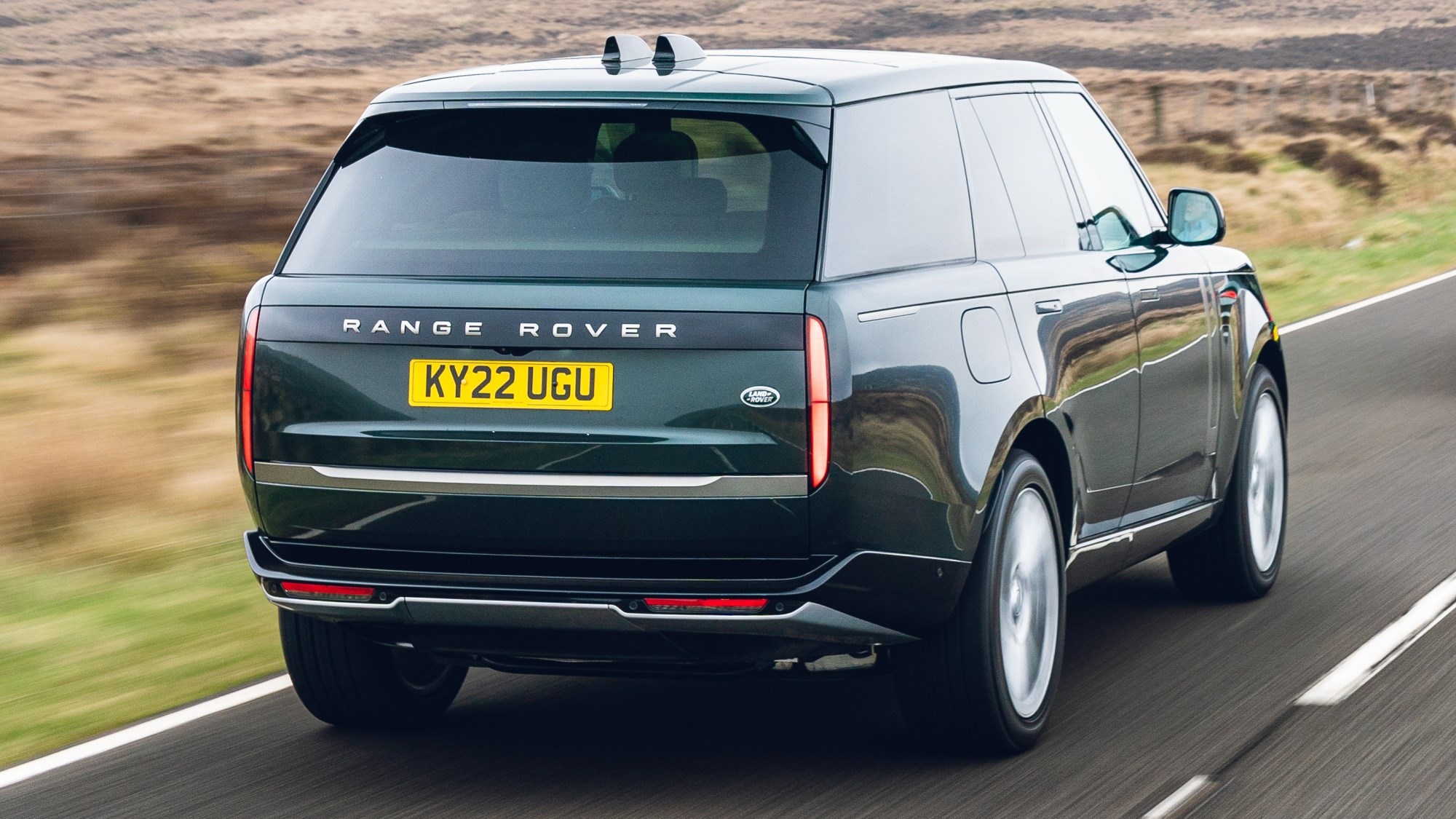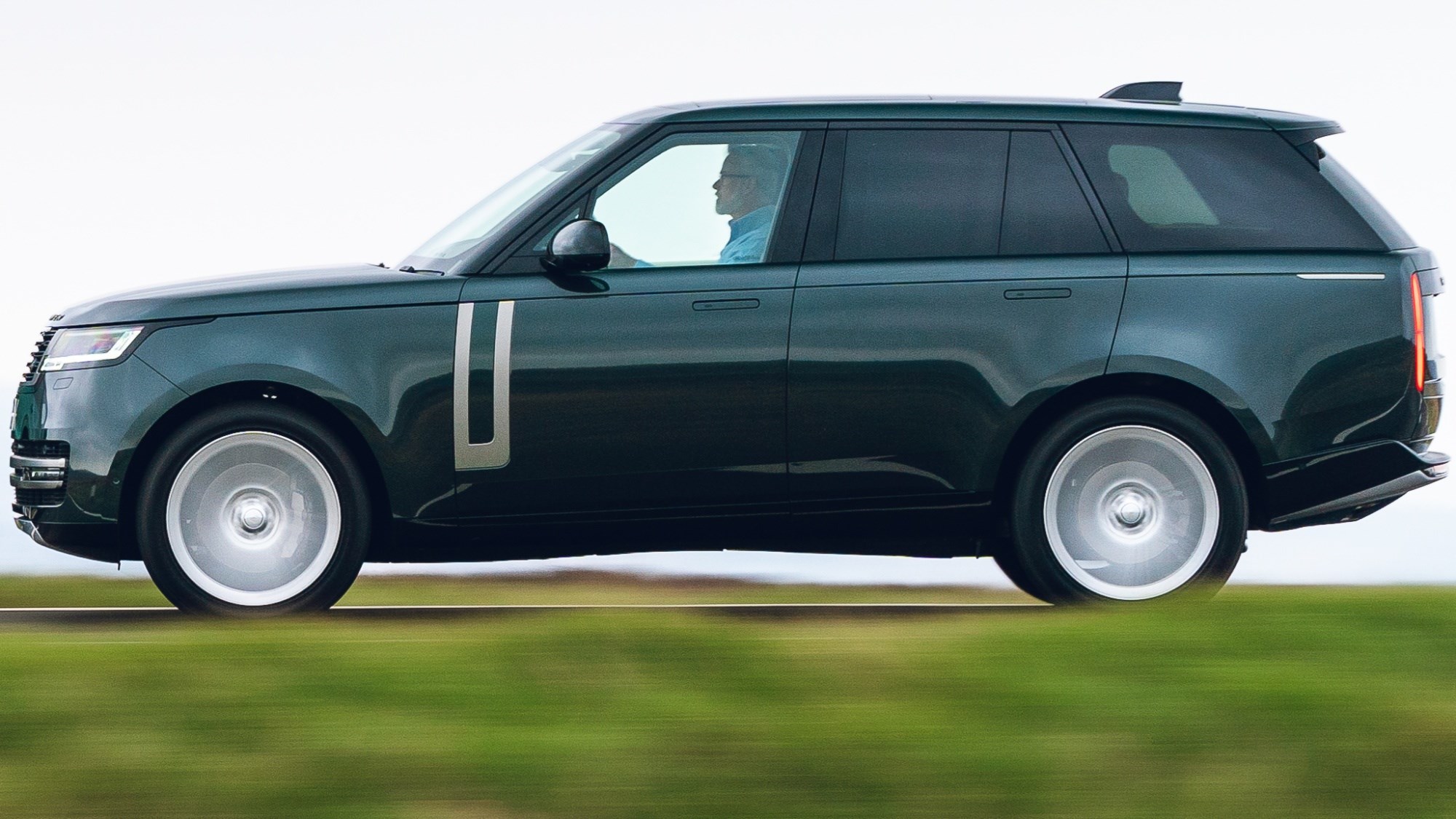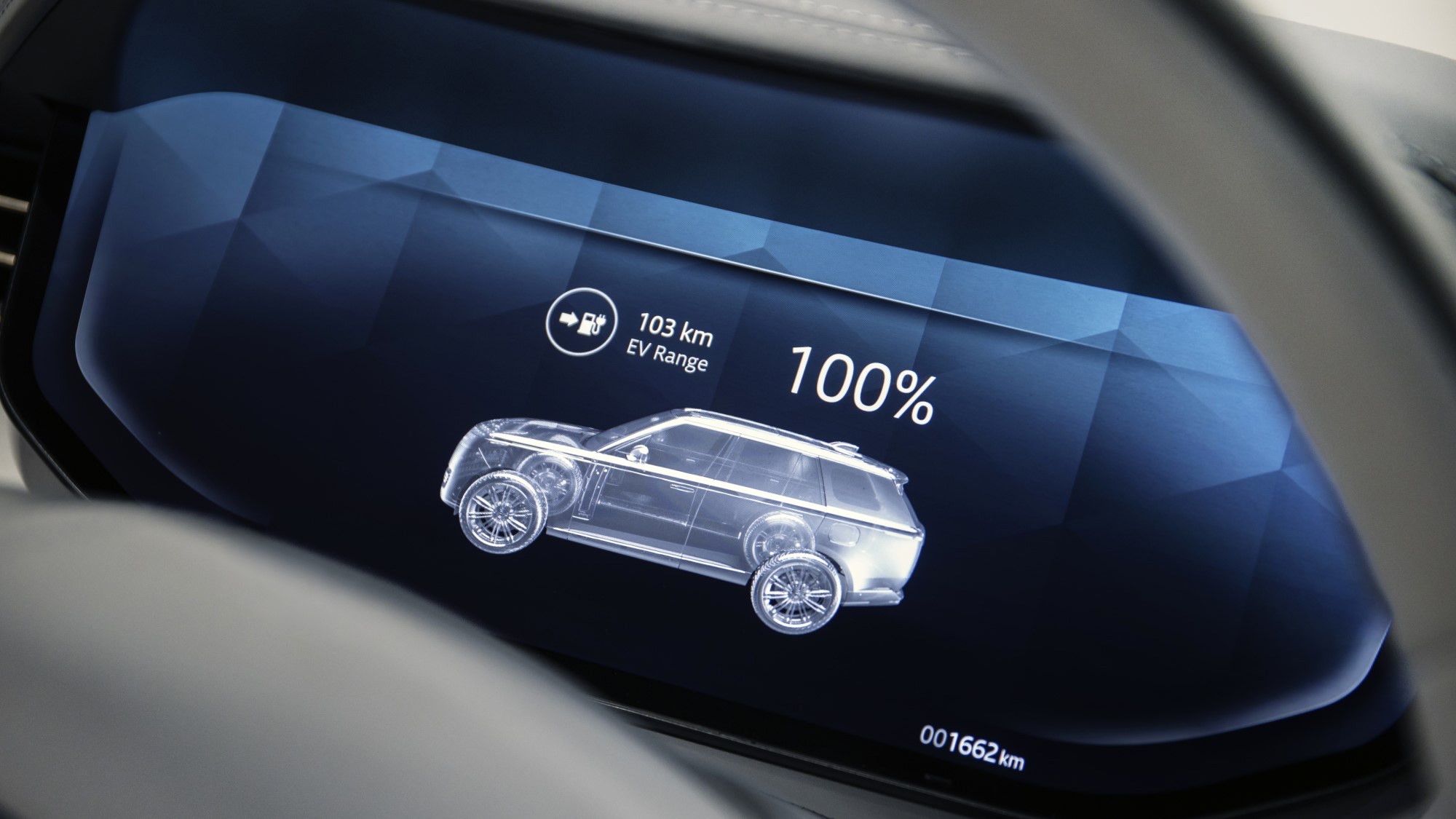► Land Rover’s all-new flagship on and off-road in the UK
► V8 petrol, i6 petrol and diesel or petrol plug-in hybrid now available
► New technology, new structure, newfound dynamic flair
Playing spot the difference with the new (now hybrid-engined) Range Rover is a surprisingly tricky game. Yes, the vertically stacked rear lights are a giveaway, but you really need to be holding a picture of the old car to truly appreciate the metalwork changes.
Smoother and less cluttered than before, they hide what can only be described as a revelation beneath the skin. Sure, there are some carry-over diesels, but this is a whole new platform stuffed full of new hardware, software and powertrains. You’ll have to wait until 2024 for a fully electric Rangey, but the mild-hybrid enhanced six-cylinder petrol and diesels plus a BMW sourced V8 should suit many at launch.
For those that are looking for a lower-CO2 option to ease the burden on your conscience or wallet, there are a pair of plug-in hybrid options. Offering zero-emissions motoring for up to 70 miles plus hyper-low CO2 figures, they look compelling on paper – and are almost as impressive on the road too.
Competition in the luxury hybrid SUV sphere is trickier than ever, with Bentley, Rolls Royce and Lamborghini all throwing a flat cap in the ring. The new Range Rover has impressed abroad, but how does it stack up on home soil?
This is still a big, 2.5-tonne behemoth though, right?

The L460 is many things but no, Land Rover has not made a featherweight of its flagship. Kerb weight for the D350 version (the range starts with the lesser D300, priced from £99,375) is a stout 2505kg. But this is an all-new car bejewelled with most every bit of mass-hiding chassis tech imaginable, not to mention thousands of hours of dynamic calibration work by Land Rover’s artisan engineers.
Bringing the magic is a body structure some 35% stiffer than that of the outgoing car’s, a new electronic anti-roll control system (rated to an eye-watering 1032lb ft of torque, applied in milliseconds, and both faster-acting and more CO2-efficent than the old hydraulic set-up), rear-wheel steering and new five-link rear suspension. The latter is part of a packaging work of art that delivers the outlandish wheel articulation the Range Rover needs for off-road duty while also incorporating the powertrain components of both today (a differential) and tomorrow (the rear e-motor of 2024’s twin-motor battery-electric version).
On the move, on the kind of roads Range Rovers have traditionally endured rather than enjoyed, the L460 is effortless, even at speed. You sit high, of course, with fantastic visibility. The steering is ideally weighted, neither scary light nor pointlessly heavy, and with the precision to help shrink the car. Body roll is well controlled, particularly in Dynamic mode, the Range Rover moving a little on its suspension on turn-in before settling and holding a line with its physics-defying combination of anti-roll control, torque vectoring and intelligent all-wheel drive.
The old car’s vagueness and wallow has been well and truly banished, although don’t think for a moment the Range Rover corners like a performance SUV. The anti-roll bars still allow a few degrees of lean before propping things up and there’s still an enjoyable waft to proceedings. In other words, body control is as tight as it needs to be without eliminating the character that so many have fallen for.
Get clumsy or greedy and it will protest, of course, and the ESC is clumsy if it feels compelled to step in, but drive the Rangie with the appropriate sensitivity and this new L460 is a revelation; swift, enjoyable and almost entirely undemanding. The impressively intuitive rear-steer is key to this newfound dynamic flair, but also to a new, more approachable and less intimidating side to its character.
Yes, this is still a big car, yet it’s so much easier to thread through urban streets and manoeuvre in tight spaces on and off-road than before. More impressive is the way the system is integrated, virtually shortening the car’s wheelbase without requiring any additional brain power to factor in the rear wheel’s movements. That’s not something you can always say about four-wheel steer.
So it favours dynamism over comfort?
Not in the slightest. This new Range Rover is good in corners not because it’s suddenly been set-up like a board-stiff racing car but because of progress in materials, systems and engineering beneath its mighty fine metallic skin. There’s more handling and more comfort.

Almost regardless of speed and surface, this thing cossets like a Range Rover should. The ride is pillowy soft; the refinement breathtaking. Smaller wing mirrors, active noise cancelling via microphones in the wheel wells and the cabin speakers, that stiffer new body structure and details like the front differential being mounted directly to the engine, to use the motor as a mass damper – it all adds up to a sumptuously near-silent car on the road.
Even when faced with pockmarked British roads, potholes are smoothed over with less fuss and thud than the outgoing Range Rover while the tighter body control reduces you chances of feeling seasick.
Will the interior give Bentley sleepless nights?
Yes and no. Quality is a big step on from the old car, and the SV derivatives (integral to this programme from the beginning) offer the scope for detailing, paints, finishes and individualisation to rival that of Crewe’s Mulliner cars.

But the style is very different to Bentley’s. The aesthetic is more restrained, almost stark, though it never feels anything but welcoming thanks to the the artfully chosen materials and the abundance of light and space. There’s another 75mm between the axles on this version, and it makes for decadent accommodation for front- and second-row occupants alike.
Talking of which, there are myriad seating options this time around. The core car seats five. Go long wheelbase and you’ve the choice of two rows (seating four or five, and starting at £124,975) or three rows, seating seven (from £107,675). SV versions of the core car and the four- or five-seat long wheelbase version are available.
Even in short wheelbase form, there’s generous rear space while the availability of electrically sliding and reclining rear seats add a touch of luxury. You can easily control the rear window blinds using the electric window switches while our test car’s electrically operated centre armrest (itself a bit of a gimmick) hid a touchscreen control centre. Given the huge windows and elevated seating position, it’s a comfortable, cosseting choice that gives everyone a far better view than if they were stuck in an S-Class or even Bentayga.

The Pivi Pro infotainment is driven via a 13.1-inch landscape-orientated touchscreen and it’s a joy use, with clear, crisp graphics, no lag and intuitive functionality. It also interacts seamlessly with the physical controls clustered around the gearlever. The digital driver’s display is equally beautiful to look at and to use, and while it offers a choice of display set-ups, anything racier than an old-school twin pair of dials just feels wrong in a Range Rover.
What’s the best engine?
Honestly? The D350 diesel mild-hybrid six. The headline news is the arrival of a BMW-sourced twin-turbo V8, dubbed P530, and there’s much to like about it. It sounds good, pulling with a refined V8 gargle, and its hefty combination of twist (553lb ft) and punch (523bhp) serve to make the Rangie feel lighter than it is.
But the D350, with 345bhp and a handy 516lb ft, is majestic, and suits the car down to the ground. It’s barely any slower out on real words, incredibly civilised for a diesel and lends the car a wonderfully laidback character. That it’s also more cost-effective both to buy and to run just adds to the appeal. With a wry smile, Land Rover’s engineers admit that, as diesel’s popularity continues to nosedive, it’s only gone and crafted its most compelling diesel installation yet…
All engines drive through a pretty faultless eight-speed auto, and the four-wheel drive system is equally fluent on-road and off it, where its low-range ratios give the Range Rover the kind of loose-surface ability rivals can only dream of.

So it’ll still do the off-road thing?
A few taps on the Pivi Pro system and the Range Rover’s transformed, with the air suspension able to boost ground clearance to nosebleed-inducing heights just as the diffs can be locked, low-range selected and the Terrain Response 2 software set up for whatever hostile surface you find yourself upon.
We tested the car on a steep, rocky trails and muddier tracks in the UK which, though not easy, barely scratched the surface of the car’s ability. A combination of the diff locks, clever traction control and impressive suspension travel gives great traction even on road-biased tyres, while the surround view cameras and four-wheel steer make even the tightest spots surprisingly stress free. Impressively, where a 110 Defender needed some shunting to get around the tightest bends on the course, the longer Range Rover would get around it in one with ease.
The hybrid models suffer slightly lower ground clearance due to the underslung battery.
So what’s the hybrid like?
In many ways, remarkable. First of all there are the sheer numbers – the P440e produces 434bhp, the P510e, 503. They’ll do 0-62mph in 6.0 and 5.5 seconds respectively, and according to WLTP return just 18 and 20g/km of CO2 each. Those are accompanied by flight-of-fantasy mpg figures in the three hundreds.
The most impressive number is the 70 miles of all-electric range afforded by the vast, 38.2kWh battery. Admittedly, it’ll be closer to 50 in the real world, but that’s still enough to cover the vast majority of journeys sans petrol.
It’s a hefty weight penalty, though, with both hybrids coming in around 2.8 tons unladen – that’ll be over 3.0 tons with some passengers, luggage and fluids on board.

Performance is unbelievably rapid for something so vast with the electric motors providing instantaneous torque right from launch. It’s better when you take it easier, though. The electric motors are paired up to an inline-six petrol, rather than the four-cylinder found on the previous-gen PHEV. This makes it significantly more refined when you’re pootling about at low speed or on the motorway, and significantly more aurally pleasant when revved out.
Don’t go expecting to save a ton of money, though, unless you’re benefitting from free charging, solar panels or a particularly generous EV-specific energy tariff. 50 miles on the current average rate of 30p/kWh equates to around 24 pence per mile – or identical to a 30mpg petrol. Hmm.
Range Rover: verdict
This new Range Rover has taken great strides over the outgoing car, itself no slouch. Easier on the eye inside and out, the L460 is also infinitely more capable and rewarding to drive on the road, no less capable off it, roomier, more practical and quieter.
Its place in the world is much the same as that occupied by its predecessor, but it now occupies that space with an imperious confidence that borders on swagger. Yes, the Bentley Bentayga and Porsche Cayenne handle better, but few cars are as comfortable as the Range Rover or quite so well rounded. Welcome to the new luxury SUV benchmark.